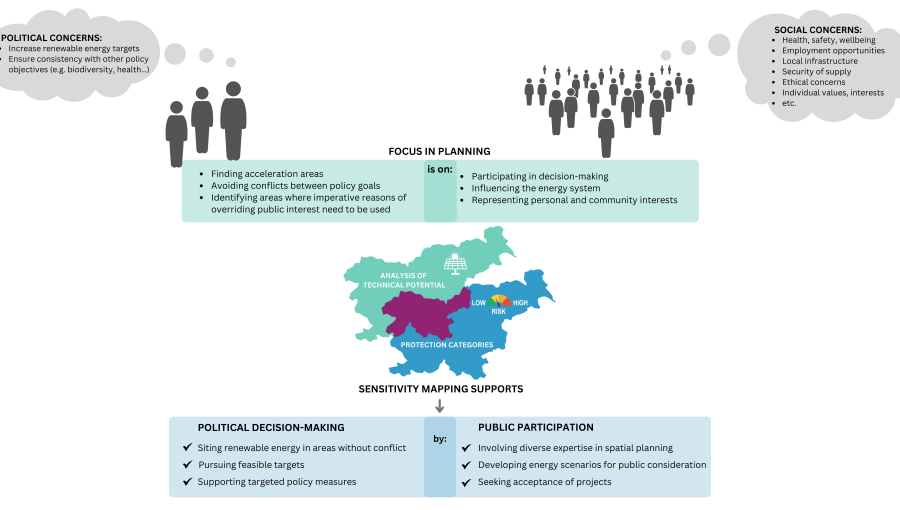Planning Renewable Energy Without Conflict?

Pixabay
Date of publication:
The transition to renewable energy is a political necessity. But how can it be implemented without compromising other vital objectives – such as biodiversity conservation, water management, cultural heritage preservation, and public health – while also ensuring active public engagement?
This complex question is addressed in a recent study by Jerneja Penca (ZRS Koper), Danijel Crnčec, and Marko Lovec (both from the Centre of International Relations, Faculty of Social Sciences, University of Ljubljana). They explore the use of sensitivity mapping as a tool for integrating political, environmental, and social considerations into spatial planning for renewable energy development.
Using Slovenia as a case study, the authors demonstrate that sensitivity mapping can help identify areas where renewable energy can be developed with a low risk of conflict with existing protection regimes. At the same time, the study highlights significant risks if the expansion of renewable energy proceeds without regard for other protection regimes, and it underlines the challenges Slovenia faces in reaching climate neutrality by 2050.
The method of sensitivity mapping, which is gaining traction across the EU in the context of accelerated renewable energy deployment, is particularly valuable in the Slovenian context. Existing studies have not yet captured the extent and diversity of protection regimes present in Slovenia.
This study contributes to the existing research by shifting the focus from merely identifying, acknowledging, and addressing sensitivities to exploring the potential of sensitivity mapping as a tool for anticipatory, integrative, and inclusive planning. This approach could lead to renewable energy development with less public opposition. Furthermore, the study emphasizes the role of sensitivity mapping in accepting limitations and making compromises in planning, thereby shifting the discussion from purely political decision-making towards broader societal consensus.
The study was published in the Journal of Environmental Policy & Planning.
The article was prepared within the project J5-2562 – Transfer of Norms in the EU and Slovenia – Assessing Progress Towards Environmental and Sustainability Transformation.


